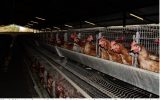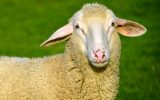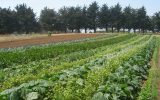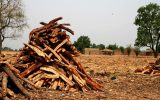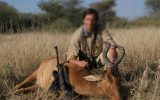These days, Namibia wears green. It is a wonderful time to marvel at the lush rangelands of our country. It is also the right time to prepare for drought.
Producing bush-based animal feed is a clever and viable strategy for farmers. Is it really possible to feed wood to grazers such as cattle and sheep? During the past drought, many Namibian farmers have tried, and tested animal feed made from encroacher bush and have found out that, yes, bushbased animal feed works. “Thanks to feed production from encroacher bush species, my livestock survived the toughest drought I have ever seen in my time as a farmer,” stated John Muinjo, commercial farmer from Outjo, Muinjo attended a bush feed formulation workshop in Windhoek earlier this year.
Bush-based animal feed has been produced in Namibia as early as 1970 but on a very small scale. It however gained momentum recently due to high demand for livestock feed in the face of drought.Farmers are showing that it not only works as drought feed, but also as supplement feed and even for feedlot operations.
As with all things, it is critical to do it right. With the production of bush-based animal feed, proper procedures must be followed, otherwise the feed will pose severe risks to animals. Farmers should harvest now while bushes are green and highly nutritious. No branches thicker than 2 centimetres of diameter should be used for bush feed production. Leaves, pods and twigs are ideal. The material can be chipped but that is not essential. It definitely needs to be milled into fibre. The fibre needs to be dried properly before it can be stored. Supplements can be added later before feeding.
A small bush feed production set-up will cost a farmer around N$ 80,000. This includes a small chipper and a hammer mill. A slightly bigger set-up could include a medium size pelletiser and would bring costs up to around N$ 120,000. A large set-up would require an investment of N$ 250,000 to N$ 500,000 and would include equipment for chipping, milling, mixing, pelleting and cooling of the finished bush feed product. A set-up like this would allow production on a commercial scale. The De-bushing Advisory Service (DAS) advocates that farmers should make the production of bushbased animal feed an integral part of their farming operations. A number of benefits arise from this – on farm level but also for the Namibian economy at large and for the country’s rangelands.
On farm level, animals will become well adapted to bush feed if it is a regular part of their diet. The farmer will gain experience in feeding practices and in ration formulation. With a robust production set-up, the farm will be more resilient in times of drought. At the same time, the farmer is continuously tackling bush encroachment on his farm and restoring rangelands.Local is lekker. Products that are produced locally do not have to be imported. Animal fodder ranks as Namibia’s eighth largest import good, with total fodder imports valuing close to N$ 4 billion in 2016. A good part of this money could be spent locally as not only the fibre but also a range of supplements can also be sourced locally. Camelthorn pods, opuntia, Marula seed cake, sunflower seed cake, salt, maize and wheat brans are examples for supplements.
A growing number of Namibian farmers are starting to produce animal feed on a commercial level as a way to diversify their income while tackling bush encroachment. BosPro, for example, is one of the prominent Namibian brands that produces high quality animal feeds for various livestock using encroacher bush species as a nutritious base. A support structure around producing bush-based animal feed is quickly developing. In 2019, over a thousand commercial, communal, emerging commercial and resettled farmers and livestock producers were trained by the De-bushing Advisory Service. DAS will continue training more farmers this year in order to upscale knowledge of bush to feed within the farming community. In addition, equipment suppliers have bought into the hype. Local and international companies are busy designing and improving technology to process bush into feed. An expo as part of the 2020 Standard Bank Biomass Fair, which will take place at Otjiwa Safari Lodge later this year, will showcase tested technology and innovations.
For Namibian farmers, however, the time to act is now. Let’s produce bush-based animal feed while the leaves are green, plentiful and nutritious.
Petrus Nghipangelua is a Junior Technical Advisor (Animal Science and Nutrition) at the De-bushing Advisory Service and he is currently pursuing an MSc in Rangeland Resources Management at the University of Namibia.
For further info and enquiry ,email the De-bushing Advisory Service at info@dasnamibia.org





